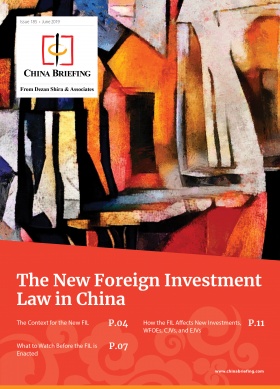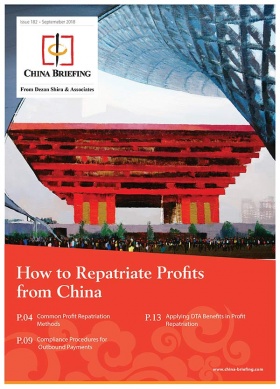Opportunity for Big Growth in China’s Sports Industry
In case you thought otherwise, China is still shooting to become a world sport leader.
In September of 2019, the Chinese State Council released a circular memo detailing current plans to make this long-standing dream a reality for the country. Of interest:
- Coordinated efforts to build more venues for exercise, including some talk of converting unused “underground spaces”;
- Tax breaks for companies in the sports industry;
- Focus on fitness for “key groups” – teenagers, the elderly, farmers, and the disabled;
- Increased allowances for private sports organizations, specifically those specializing in basketball, football, and volleyball;
- Encouragement to build a more complete sports industry chain;
- More support for developing and manufacturing sporting equipment;
- More general sporting events for the public; and
- Increased international sport exchange.
Sport in China
Since hosting the 2008 Summer Olympics, China has sought to transition into a world sport leader by changing its focus to more public-oriented sporting events and programming.
Moreover, the success of the US’ market-based sports culture on the international sporting stage and the rise of obesity in China inspired the country to take new action.
In 2014, Beijing came out with the now-famous policy document “Number 46”, which set in place plans to create the world’s largest sporting industry by the year 2025 in the hopes of mobilizing a more active population and fan base for local teams.
Investing in China
As with most investment areas in China, investment opportunities in sports are plentiful but are subject to a large amount of ever-changing regulations, besides needing to work with local associates.
The Chinese government has placed a cap of RMB 650 million (US$92 million) on the total amount of outside capital that can be injected into local clubs. The cap is expected to be weaned down to RMB 300 (US$42 million) million by 2021. This is touted to be a measure to prevent financial reliance on parent companies.
The government also has rules for non-government organizations (NGOs) planning to organize sporting events in China. To operate, NGOs must:
- Obtain approval of the provincial sport administration, and
- Establish a representative office in China.
If an NGO has no representative office, they must cooperate with an authorized Chinese organization. NGO rules are enforced by provincial sport administrators.
In 2017, FC Reus purchased a 29 percent stake in Beijing Institute of Technology (BIT) FC, a football club in China League Two, the country’s third tier. While both are not high-profile teams, this is believed to be the first time a Chinese team had received foreign investment since the new football reforms.
On the logistics side of the deal, funds were transferred to BIT from the Chinese affiliate of Hong Kong-based firm CSSB, which bought FC Reus in 2013. While there is no specific ban on foreign investments in football clubs, the funding process appeared to follow the Variable Interest Entity (VIE) structure local companies often use to circumvent foreign investment restrictions.
Generally, VIE structures in China involve three entities: a foreign exempt limited holding company, a China wholly foreign-owned enterprise (WFOE), and a Chinese-owned domestic operating company. Investors hold equity in the holding company that in turn owns 100 percent equity in the WFOE. The WFOE exercises de facto control over the Chinese company through contractual arrangements involving the Chinese company borrowing funds from the WFOE and pledging their company’s shares as collateral.
Some other major foreign investments in sport in China include:
- The General Administration of Sport unveiling plans to build 100 “sport towns” across China as well as five or six “eco sport towns” in Guizhou in collaboration with the UK’s West Bromwich Albion Football Club.
- Beijing multinational conglomerate Wanda Group’s partnerships in 2016 with FIFA offering sports production assets and with Union Cycliste International to create a number of mass-participation and elite-level sporting events in China.
For investors unfamiliar with the growth potential in China’s sport industry, we offer a brief profile of high value market segments, both, in terms of sporting activity and its allied industries.
Football
It is no secret that President Xi Jinping is a football fan. He has made public goals to make China a football superpower by 2050. Infrastructure goals include 30 million kids playing the sport, 20,000 new football academies, and 70,000 pitches by 2020. The government has worked hard to groom homegrown talent and combat match fixing and other corrupt practices that have traditionally plagued the domestic league in China.
The Chinese Super League (CSL or more formally, China Ping An Chinese Football Association Super League), which is the top-tier of professional football in the country, is now one of the most popular professional sports leagues in China, with 16 teams competing. The average attendance at its league matches was 24,107 in the 2018 season. This makes the CSL the twelfth-highest attended domestic professional sports league in the world and the sixth-highest of any professional association football league in the world – after the German Bundesliga, England’s Premier League, Spain’s La Liga, Italy’s Serie A, and Mexico’s Liga MX.
International football is also big business. For the 2018 World Cup, Chinese citizens were reported to have bought 40,000 tickets (8,000 more than the English) and were the top viewers of the matches by volume – 250 million viewers or 20 percent of the country’s population. The European leagues enjoy high steady viewership from the mainland and sponsorship deals and tours have become increasingly regular.
Basketball
Basketball has long replaced traditional favorites like ping-pong and badminton as the most popular sport in the country. Enjoying sizable popularity as far back as the 1970s, an estimated 300 million people currently play the sport, roughly equivalent to the entire population of the US. Due to the small size of basketball courts, there is ample infrastructure in place for the sport.
In 2008, the US’ National Basketball Association (NBA) made significant inroads into China when it formed a joint venture with Chinese sports and entertainment group AEG to build at least a dozen “NBA-style” arenas in the country. That year they established the NBA China branch, which in ten years built over 200 NBA lifestyle apparel stores, three “NBA play zones” for kids, five basketball academies, over 4,000 partner schools – in collaboration with the Ministry of Education. NBA China has close ties with the Chinese Basketball Association (CBA) through commissioner and former NBA star, Yao Ming.
The NBA opened an official Weibo account in 2010. As of 2017, it enjoyed 33 million followers and clocked 2.9 billion video views for the NBA finals the same year. Since 2009, they have expanded streaming agreements with local partner Tencent, leading to 21 million fans streaming the 2019 NBA finals. In fact, 490 million watched some form of NBA programming the same year.
Many foreign sports clubs look to talent acquisitions like the NBA’s drafting of Yao Ming in 2002 as one of the keys to the hearts of Chinese fans and viewership. International football and baseball clubs have increased training and scouting in the mainland in the hopes of pushing the next Chinese sensation on to the world stage and bringing the coveted Chinese fanbase to their club.
Winter sports
China officially has the world’s largest beginner market for winter sports.
Spurred on by preparations for the 2022 Winter Olympics in Beijing, the number of visitors to ski resorts in the country has tripled from 5.5 million people in 2009 to 15.1 million in 2016. The supply chain is still considered long within the sector so there many opportunities for logistics-oriented businesses.
In 2017, Alibaba Sports Group launched its “Get into Snowsport” campaign with the International Ski Federation, aiming to create 30 million Chinese snowsport participants in time for the 2022 Winter Olympics.
Esports
Esports is now a sporting phenomenon in China. The Chinese government made headlines in February when they officially recognized the roles of “esports professionals” and “esports operators” as professional job titles in the country. Esports-related majors have also been added to the roster at several colleges across the country.
According to industry reports compiled by industry analyst Newzoo and corporate consultancy PwC, China will soon overtake South Korea as the second largest e-sports market after the US in 2019. The country’s industry is expected to continue to grow at a compound annual rate of 21 percent until 2023. In 2019, China will account for US$210 million in revenue compared with US$409.1 million in the US.
Currently, six cities – Hangzhou, Chongqing, Shanghai, Xi’an, Sanya, and Haikou – are competing to become China’s main esports hub.
Fitness and lifestyle
The Chinese middle class has been growing for quite some time now and with it has come the concerns of a modern, affluent, increasingly white-collar society.
An official report from 2015 revealed more than 30 percent of Chinese were overweight, and nearly 12 percent obese. In 2019, one in five children was found to be obese – up from one in twenty in 1995. Food, particularly fast food, is increasingly abundant in Chinese cities where people now get less exercise on average and often choose to spend their free time watching TV or playing video games.
At the same time, with the rise of social media and “selfie-culture”, young Chinese feel increasing pressure to look a certain way. The country’s growing fitness industry has thus benefited from young and urban, increasingly affluent consumers choosing to keep up with lifestyle trends and forming online communities.
Across the fitness industry, statistics show more and more Chinese are getting into regular physical fitness regimes every year. The number of traditional fitness clubs grew at a staggering 31.13 percent in 2018, generating US$6.91 billion in revenues.
Mu Yikun, the CEO of SPAX, a service provider for treadmills and treadmill-related fitness classes reported to CGTN in 2018, “the sales volume of home fitness equipment, like treadmills and exercise bikes, is around five to six million units per year. We believe the number will double in the next two to three years.”
In China, less than three percent of the population currently hold a gym membership, compared to 14 percent in the UK and 20 percent in the US. Only 34 percent exercise regularly as opposed to 70 percent in the US. The growth potential of the Chinese fitness market is thus significant.
Athletic wear
Foreign athletic wear has long been a booming business segment in China with international brands like Nike and Adidas leading the market over local brands like Li-Ning and Anta. At the moment, athleisure wear as an industry is growing rapidly as consumers pick high-end sporting brands over luxury fashion due to its mixture of comfort and modern appeal.
Despite their longstanding popularity and a huge share of the Chinese market, however, there are signs that foreign sporting brands may be losing their absolute hold at the top.
The US-China trade war is currently making it difficult for many foreign athletic goods companies to fully utilize their Chinese supply chains to export to the world’s single largest consumer of sporting goods – the US. According to Bloomberg, large amounts of the Chinese production capacity used by global sportswear brands may be lying idle due to foreign manufacturers leaving the country. Analysts believe increased restrictions will cause many companies to focus harder on the local market due to the shorter supply chain logistics required of manufacturing and selling within China itself.
This change inevitably gives local athletic brands a home-court advantage. They know the Chinese market better and are becoming increasingly competitive. Analysts already say younger Chinese, born after 1990, are confident in China’s rise and have developed an affinity for national brands. And though China only represents half the market share of the US for sporting goods, it has immense growth potential.
Technology
Fitness apps have made a tremendous surge in China. One such app called Keep, founded in 2014, boasted of 160 million Chinese users in 2018. Five million users are on the app every day. Users claim the convenience of being able to work out around their own busy schedules without going to a gym or paying for an expensive class keeps them coming back to these platforms. Keep also allows users to check their progress online against their friends. Since Keep’s launch, companies like Xiaomi and Tencent have launched their own competitors.
In 2015, the Alibaba Group established Alibaba Sports Group to compile the company’s vast resources to create “an internet-based, consumer-centric sports platform”. The plan that has already brought in partnerships with Real Madrid, Bayern Munich, and the International Ski Federation (ISF).
Nielson Sports estimates that technology, mostly online media platforms, is central to the market’s growth. This is because while most physical sports stadiums are in the metro areas of major cities like Shanghai, Beijing, and Guangzhou – 86 percent of fans reside outside of these areas.
About Us
China Briefing is produced by Dezan Shira & Associates. The firm assists foreign investors throughout Asia from offices across the world, including in Dalian, Beijing, Shanghai, Guangzhou, Shenzhen, and Hong Kong. Readers may write to china@dezshira.com for more support on doing business in China.
- Previous Article China’s New Standards of Cosmetics Registration, Filing, and Inspection Announced
- Next Article In China, For China – Limiting Tariff Risks, Serving Chinese Consumers








